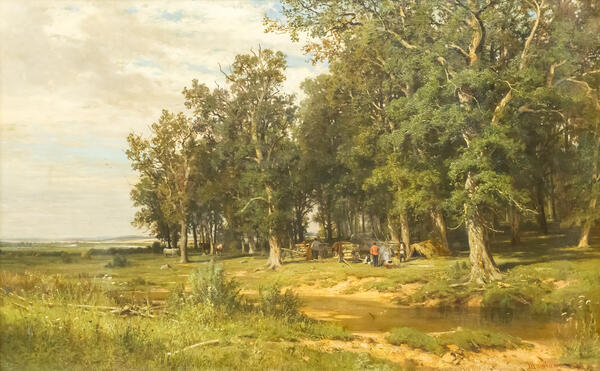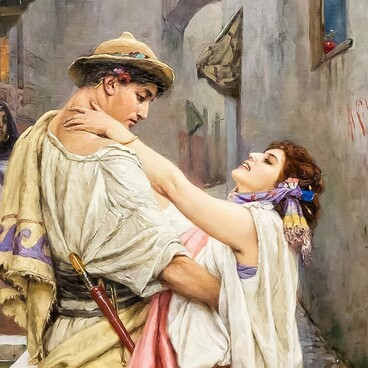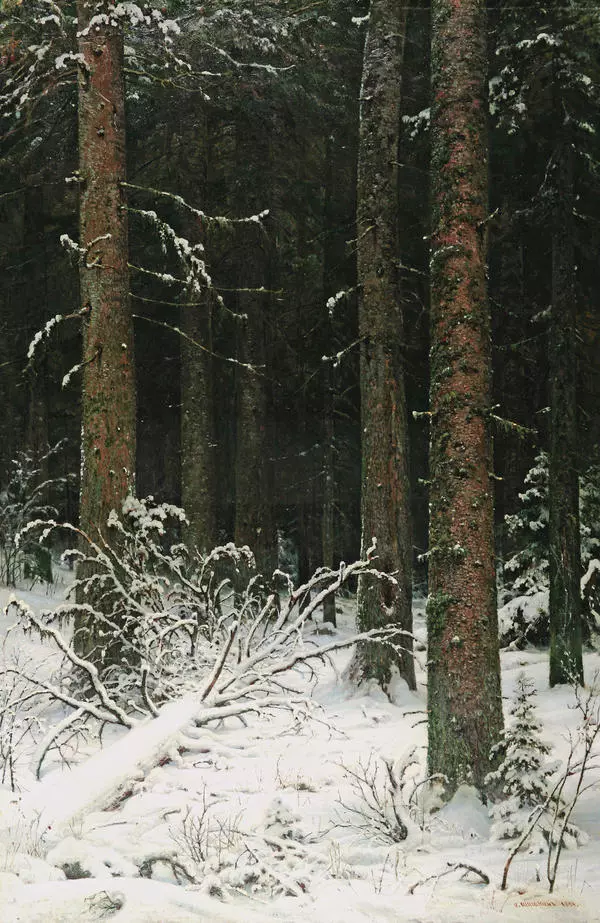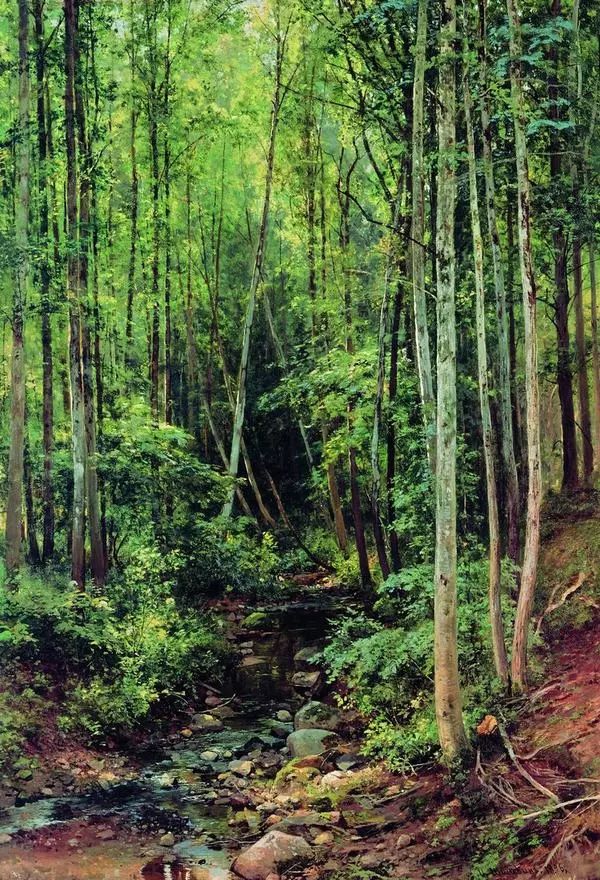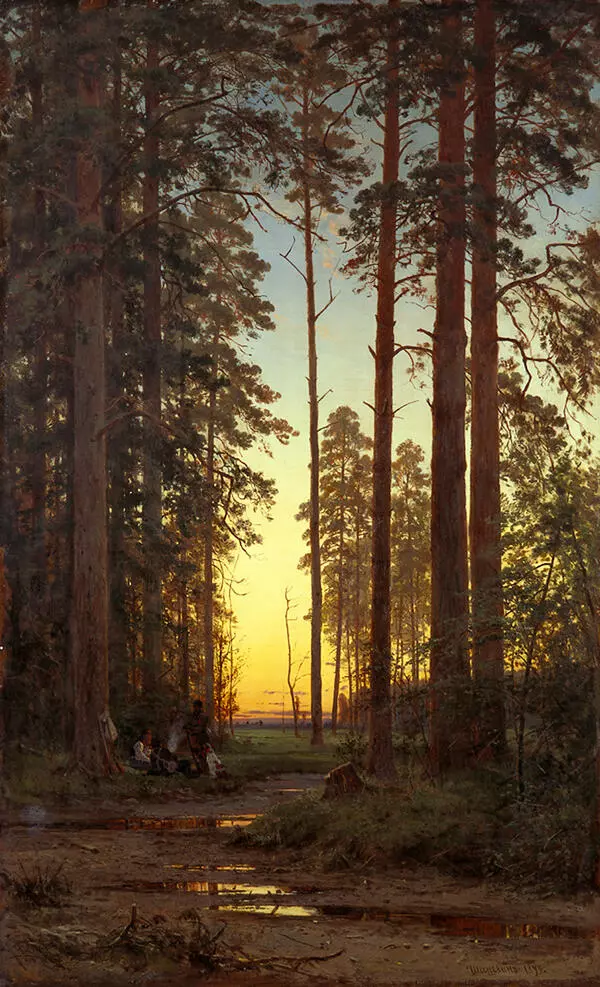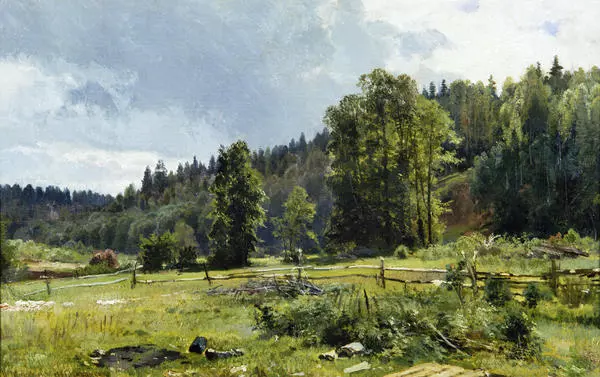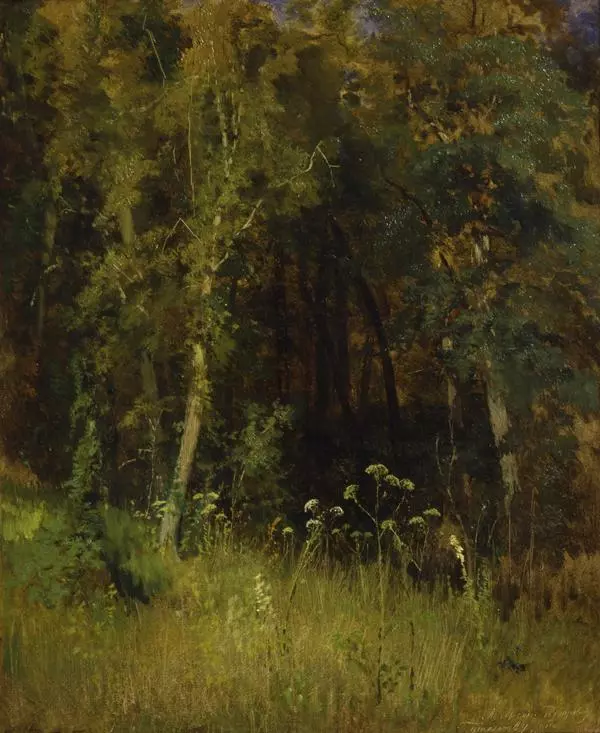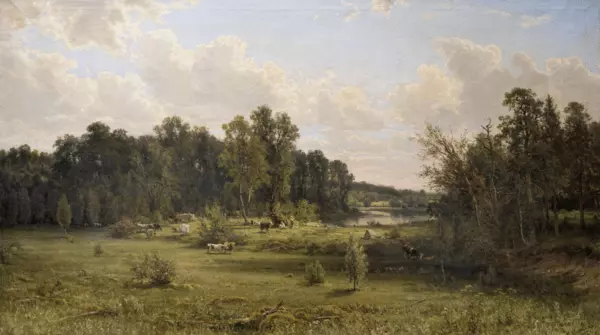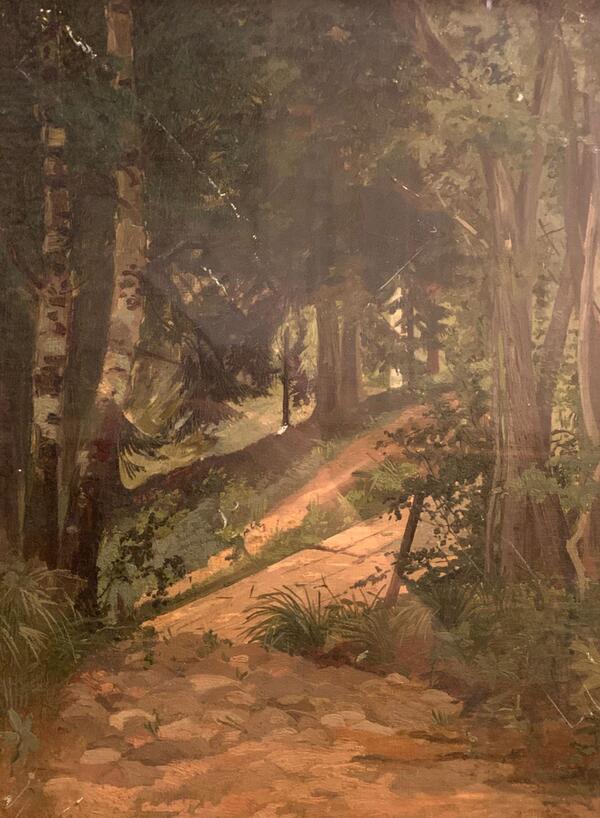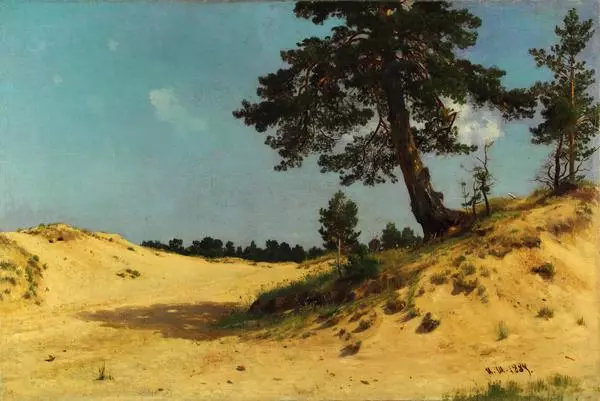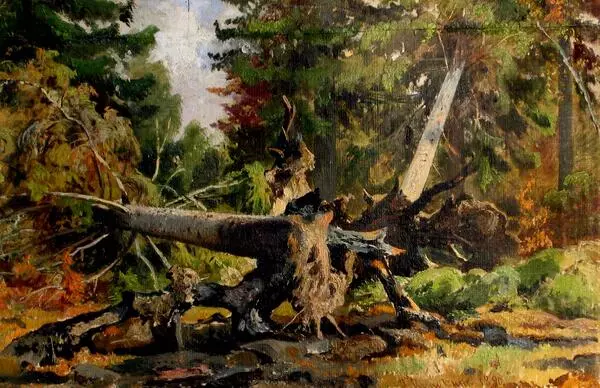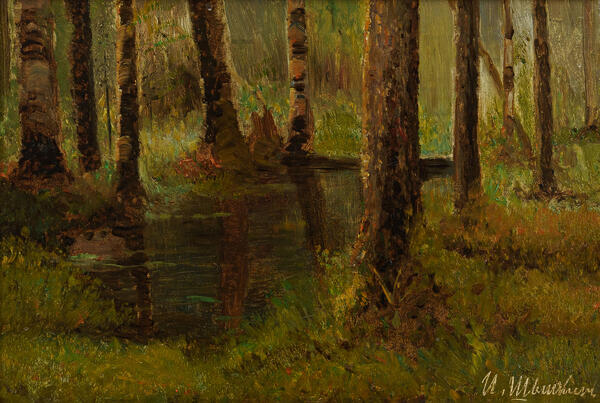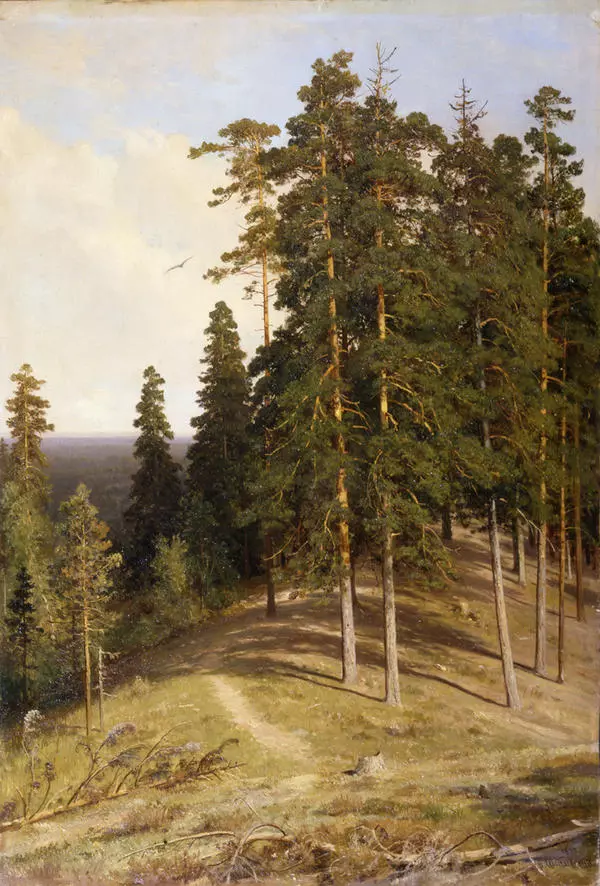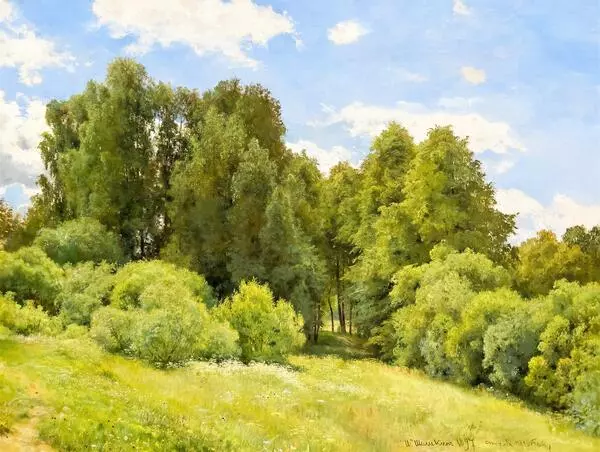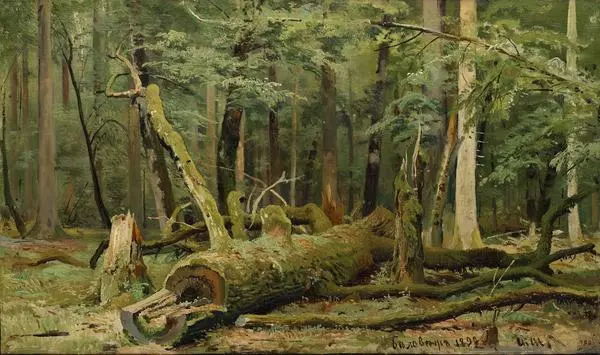‘Mowing in the Oak Grove’ was created by Ivan Shishkin — a painter who was nicknamed the ‘Singer of Russian forests’ by his contemporaries. The composition of this painting uses contrasting horizontal and vertical lines — the fields stretch all the way to the horizon, while the trunks of centuries-old oaks soar up to the sky.
Shishkin portrayed the grove at such an angle as if the viewers look up at it — this decision helped to make the trees look bigger and show their might and strength. The branches of a tree in the foreground even go beyond the canvas, which intensifies the feeling of nature’s grandeur and vastness. The artist used this “fragmentation” technique (when the edges of the canvas trim off some parts of the painting) in his other workss as well.
As a rule, Shishkin depicted real-life locations. He spent long hours walking with his sketchbook in search of interesting scenes. Feeling inspired after wandering in various groves and copses, he used to come back with numerous sketches and create full-size paintings in his studio. “Mowing in the Oak Grove” was created from the studies made during the trip to Yelabuga in 1871. That is why the painting was initially called “The Oak Grove near Yelabuga.”
In this painting, Shishkin aimed to show the vastness of nature. The tradition of an epic landscape, reflecting the greatness and special significance of nature, is essential in Russian art. Ivan Shishkin, also known as the “Tsar of the Forest”, is considered one of the pioneers of this genre. His paintings were esteemed as much as the canvases of Ivan Aivazovsky and Isaac Levitan, and their reproductions were printed in textbooks, as well as on mail stamps, candy wrappers and greeting cards. It can be safely said that “Morning in a Pine Forest”, “Rye” and other paintings have long become symbols of Russia. “Mowing in the Oak Grove” also made it on the list.
Initially, Shishkin sold the painting to his friend Pyotr Ushkov, merchant of the 1st guild and owner of chemical plants. During the Bolshevik Revolution, the picture was lost out of sight until 1926, when it was discovered in the attic of the chemical plant building in Bondyuga (nowadays known as Mendeleyevsk). That same year, the museum department of the Tatarstan Narkompros donated the painting to the museum of Kazan.
Shishkin portrayed the grove at such an angle as if the viewers look up at it — this decision helped to make the trees look bigger and show their might and strength. The branches of a tree in the foreground even go beyond the canvas, which intensifies the feeling of nature’s grandeur and vastness. The artist used this “fragmentation” technique (when the edges of the canvas trim off some parts of the painting) in his other workss as well.
As a rule, Shishkin depicted real-life locations. He spent long hours walking with his sketchbook in search of interesting scenes. Feeling inspired after wandering in various groves and copses, he used to come back with numerous sketches and create full-size paintings in his studio. “Mowing in the Oak Grove” was created from the studies made during the trip to Yelabuga in 1871. That is why the painting was initially called “The Oak Grove near Yelabuga.”
In this painting, Shishkin aimed to show the vastness of nature. The tradition of an epic landscape, reflecting the greatness and special significance of nature, is essential in Russian art. Ivan Shishkin, also known as the “Tsar of the Forest”, is considered one of the pioneers of this genre. His paintings were esteemed as much as the canvases of Ivan Aivazovsky and Isaac Levitan, and their reproductions were printed in textbooks, as well as on mail stamps, candy wrappers and greeting cards. It can be safely said that “Morning in a Pine Forest”, “Rye” and other paintings have long become symbols of Russia. “Mowing in the Oak Grove” also made it on the list.
Initially, Shishkin sold the painting to his friend Pyotr Ushkov, merchant of the 1st guild and owner of chemical plants. During the Bolshevik Revolution, the picture was lost out of sight until 1926, when it was discovered in the attic of the chemical plant building in Bondyuga (nowadays known as Mendeleyevsk). That same year, the museum department of the Tatarstan Narkompros donated the painting to the museum of Kazan.

